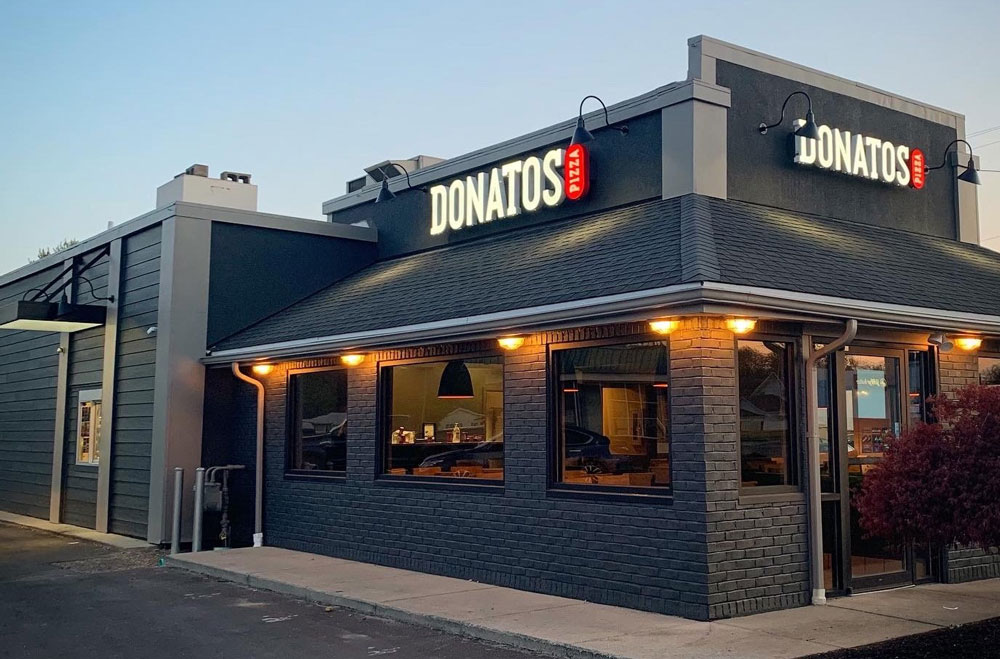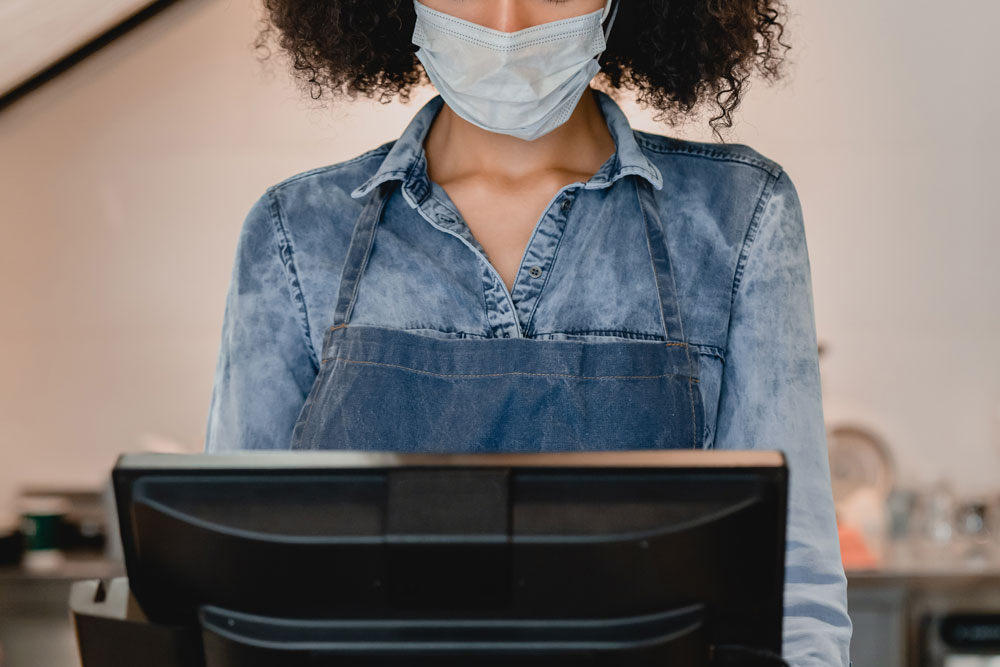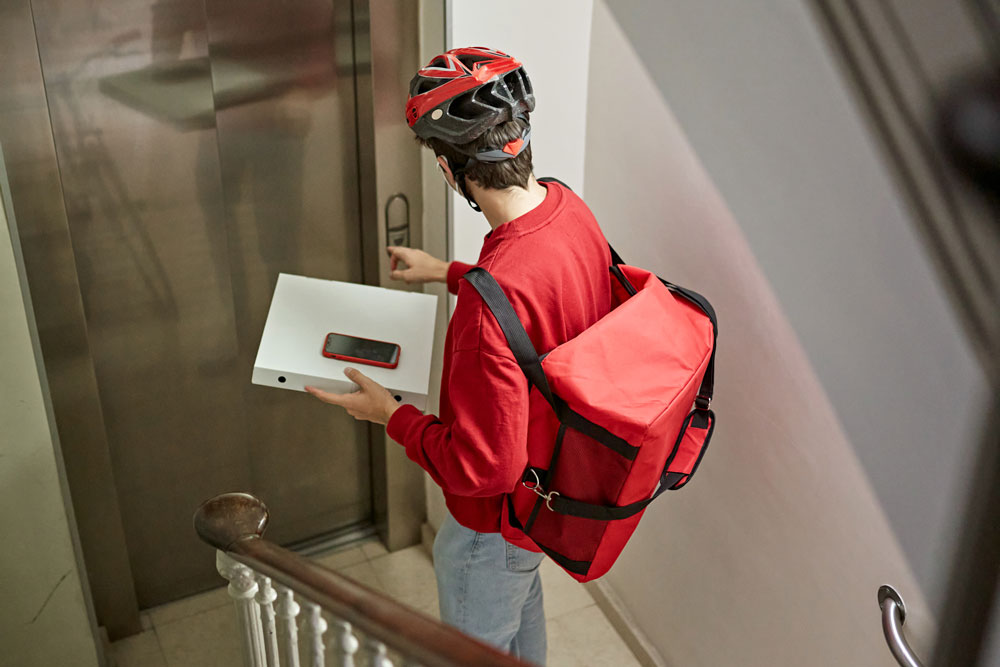- There are many high-tech tools out there to help you create a more seamless carryout and delivery operation.
- Experts share advice in five key operational areas to ensure a smoother process for owners and customers alike.
Related: Creating the best takeout experience for your customers
By Tracy Morin
As the pandemic continues to shape-shift, and as the norm for many consumers has evolved to eating at home, smooth carryout and delivery services are necessities for pizzerias. According to a July 2021 survey by Vericast and its Valassis line of business, only 49% of millennials and 43% of Gen Z customers are comfortable with dining indoors at a restaurant, while 63% of consumers say they are much more comfortable ordering carryout or delivery than dining in.
Fortunately, Katie Swett, product lead for San Francisco-based Square, points out that pizzerias can find plenty of ways to streamline their outgoing orders. “While delivery and carryout became popular during COVID, many diners will continue to prefer this method of eating, so it’s important that restaurants look to optimize,” Swett notes. “For restaurants that are looking to improve the efficiency and speed of their delivery and carryout options, there are many tools that can enable seamless operations.”
Smooth Operators
So you want to start streamlining your to-go orders. Where to start? Experts share some advice in five key operational areas to help ensure a smoother process for owners and customers alike:
Nail delivery details.
In Austin, Texas, Show Me Pizza co-owner and operator Benjamin Demarchelier maximizes delivery efficiency in a plethora of ways. “Speed is the name of the game when it comes to having successful delivery,” he says. “Online ordering integration—we work through Toast POS—brings all of the third-party delivery companies into one hub, and having all of the companies, like Uber Eats and DoorDash, sending orders directly to our aggregator maximizes efficiency. People can order easily on any of their sites—or, preferably, on ours, which is the best for our margins.”
Swett adds that operators can utilize certain delivery software to dispatch couriers from companies like DoorDash and Uber Eats to fulfill online orders, without paying marketplace fees or signing contracts. “The software can also enable businesses to integrate their loyalty program to let customers collect and redeem points on delivery orders, ensuring they’re rewarded for coming back, even when they’re not coming inside,” Swett says. “On-demand delivery from a restaurant’s own website allows them to own the direct relationship with their customers, instead of prioritizing fast, anonymous sales. Owning these relationships gives businesses the control and information to create more loyal customers and, in turn, long-term success.”
“One way we maximize efficiency in our carryout program . . . is through the use of our pickup windows—100 of our 168 current restaurant locations have a pickup window.”
— Tom Krouse, Donatos

Simplify the menu.
Menu optimization for delivery and carryout is a must. Not all of your dine-in menu will be suitable for takeout and delivery—some foods simply don’t travel well—so Swett recommends analyzing your menu and leaving out the items that don’t make sense for transportation. “This analysis will also make it easier for your kitchen staff to prepare meals and stay on top of delivery and takeout orders,” Swett adds. “When developing a specific menu for delivery and carryout orders, restaurants will want to be sure to include images and item descriptions so customers can quickly and easily comb through your menu without needing to call in with questions—which take up employees’ time and slows down operations.”
Streamline the kitchen setup.
Demarchelier points out that his kitchen is set up like an assembly line, and employees prepare as much as possible in advance to speed up operations once orders are placed. “Customers can even watch the process on twitch.tv/showmepizza,” Demarchelier says. “Portions are already separated for complicated pizzas, so we can prepare pizzas in minutes. Our ovens bake at 800°, so once a pizza hits the stone, it’s ready in 90 seconds. Drivers can come in, pick up their pies and leave without waiting.” Meanwhile, to more quickly fulfill liquid refreshments, Show Me Pizza sells only canned and bottled soft drinks—moving away from fountain sodas, which take longer to fill. Finally, salads are all made fresh daily but are prepackaged, so the kitchen doesn’t need to make them while juggling other items ordered.
In addition, Swett recommends using a kitchen-display system (KDS) in the back of the house, which allows restaurants to view, track and fulfill orders via digital tickets, replacing traditional paper and printers. “Restaurants can then see all orders on one screen, compiling orders placed through one’s POS, website or delivery apps, and everything is sent to and fulfilled directly from the kitchen,” Swett says. “The KDS also enables restaurants to route items to particular stations while getting notifications and tickets to keep orders moving. This creates an organized process for ordering that will improve efficiency and speed.”

Seek creative solutions.
Scan your building for outside-the-box ways you might be able to better serve your customers. For example, pickup windows have been saviors at many outposts of Donatos Pizza, headquartered in Columbus, Ohio, with 168 locations. “One way we maximize efficiency in our carryout program and have a competitive advantage is through the use of our pickup windows—100 of our 168 current restaurant locations (61 franchise and 39 company-owned) have a pickup window,” explains Tom Krouse, CEO of Donatos. “The pandemic showed the importance of these, as our pickup sales increased by 47% from April 2019 to April 2020. In the first half of 2021, 52% of our business came from pickup. Customers love the convenience of not having to leave their vehicle in order to get their food.”
Others recommend the ease of QR codes—not a new technology, but one that certainly took off in the pandemic. “To reduce lines and wait times, QR codes offer a great way for customers to quickly scan your menu and place their order online without having to wait for staff to be available,” Swett notes. “A customer simply scans the code, browses your online menu, and places their order through your website.”
Stand and Deliver!
As demand for pizza delivery skyrockets, it’s more important than ever to understand the risks involved and how to manage them.
Read more at PMQ.com/delivery-driver-risks
Ready to add third-party delivery to your operation? Revisit our article from September 2020 about how to make food delivery aggregators work for your pizzeria.
Read more at pmq.com/third-party-candidates
Explore POS possibilities.
Swett believes that a fully integrated POS system should operate as the heart of any restaurant—enabling in-person dining, delivery and carryout; a website; payment and sales insights; loyalty and marketing programs; back-of-house operations; and more. “With any POS system, it’s important to let customers pay in whatever way they feel most comfortable—whether that’s to prepay online through a website or to have a flexible POS system that allows customers to use contactless payments, which will help speed up lines,” Swett explains. “A portable payments terminal can serve as an extension of your existing POS and enables restaurant employees to quickly take payments at the countertop, roaming around the restaurant, or at someone’s car, should they wish to have food brought out to them.”
Additionally, POS systems can create real-time sales reports to inform future business decisions when it comes to delivery, carryout—and everything else. “From top-line summaries to granular daily stats, a smart POS system will help keep track of all of the insights a restaurant needs to run smoothly,” Swett says. “Restaurants can see sales by category, item or payment type. These reports determine which items are bestsellers and those that are ordered least, so you can be sure your inventory ordering matches exactly what you need.”
Finally, Swett adds, sales reports will help with staffing, so the pizzeria can better accommodate orders coming in via various channels. Because they identify busy and slow times of the day, pizzeria owners can properly staff for each shift and ensure they’re providing customers with optimal service—no matter what to-go method they choose.
Tracy Morin is PMQ’s senior copy editor and the editor of PizzaVegan.com.













